Before the horrors of Jeffrey Dahmer came to light, Larry Eyler targeted vulnerable young homosexuals across the American Midwest.
On August 3, 1978, a young man named Craig Long was stabbed in the chest. As paramedics patched him up, he told them how he’d been propositioned by the man with whom he’d hitchhiked, and when he’d refused, the man had gotten violent. Long had faked his death and crawled to a nearby farmhouse for help.
Not long after the paramedics began tending to him, another young man arrived – the man who had stabbed Long. His name was Larry Eyler and he claimed to have stabbed Long by accident. A search of his car revealed that he probably hadn’t – in the backseat of the car were all the tools of a kidnapper: a sword, hunting knives, tear gas, and handcuffs.
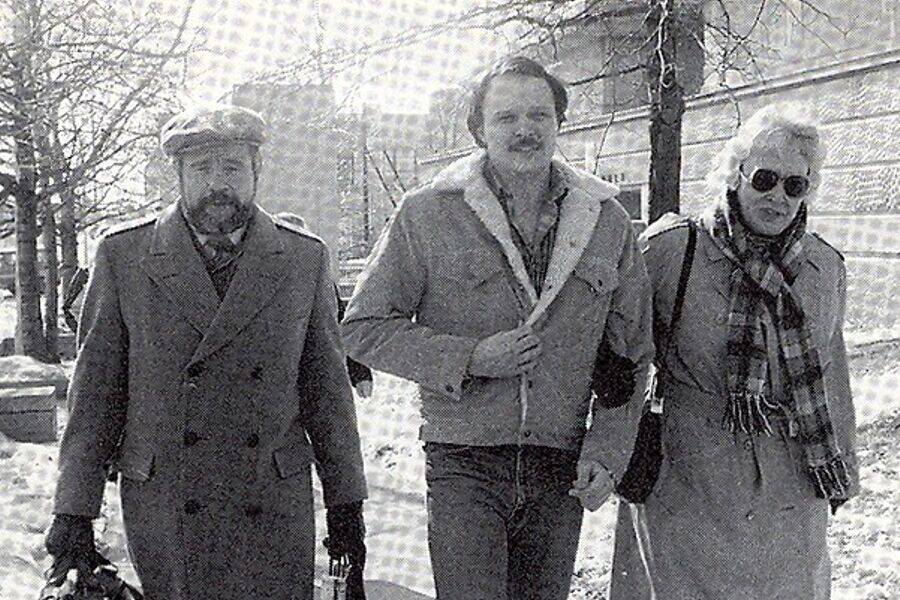
MurderpediaLarry Eyler leaves court with his mother and his attorney.
Despite the obvious crime, in the end, Larry Eyler was never charged. Aside from $43 in court fees, the would-be killer got off scot-free. It was only later that police realized their grievous mistake.
If only Larry Eyler had been jailed for the attempted murder of Craig Long, perhaps some 21 other young men could have been spared.
Larry Eyler’s Early Life
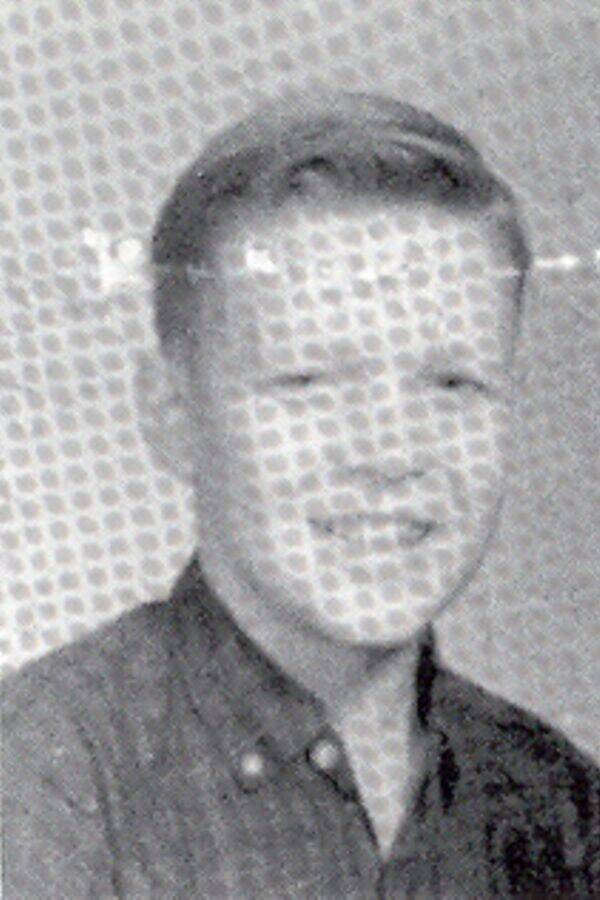
MurderpediaLarry Eyler’s school photo.
One need only glimpse Larry Eyler’s childhood to understand how he was driven to kill as an adult.
Born Larry William Eyler on December 21, 1952, in Crawfordsville, Indiana to a battered mother and an alcoholic father, life was not easy for Eyler from the start. His father regularly beat him and his two older and one younger sibling. Even after his mother left his father when Eyler was just two years old, life didn’t improve.
Their mother worked to make ends meet but the Eyler children were left in the care of babysitters, foster homes, and many times, just each other.
Even in school, Eyler couldn’t find relief. Though he was active in school sports, he was bullied by his peers for his family’s financial state and the fact that his mother was never around. His younger sister, Teresa, often came to his aid and Eyler would later describe her as one of his closest confidantes.
By 1974, Larry Eyler’s mother had been married four times. His father and two of his stepfathers regularly drank heavily and often turned their rage on Eyler, his siblings, and his mother. One of his stepfather’s reportedly liked to discipline Eyler by forcing his head under scalding water.
The emotional damage from the repeated physical and emotional abuse caused Eyler to act out, which caused his mother to have him psychologically evaluated.
The tests came back showing that Eyler was of average intelligence, but had been plagued by severe insecurity and fear of abandonment. Experts recommended, despite Eyler’s fear of abandonment, that he be placed in a boy’s home in Fort Wayne, Indiana. He lasted six months before his mother brought him home.
Perhaps due to his shattered home life or his frequent outbursts, or perhaps because he simply didn’t care, Larry Eyler never graduated from high school.
Larry Eyler Turn Towards Violence
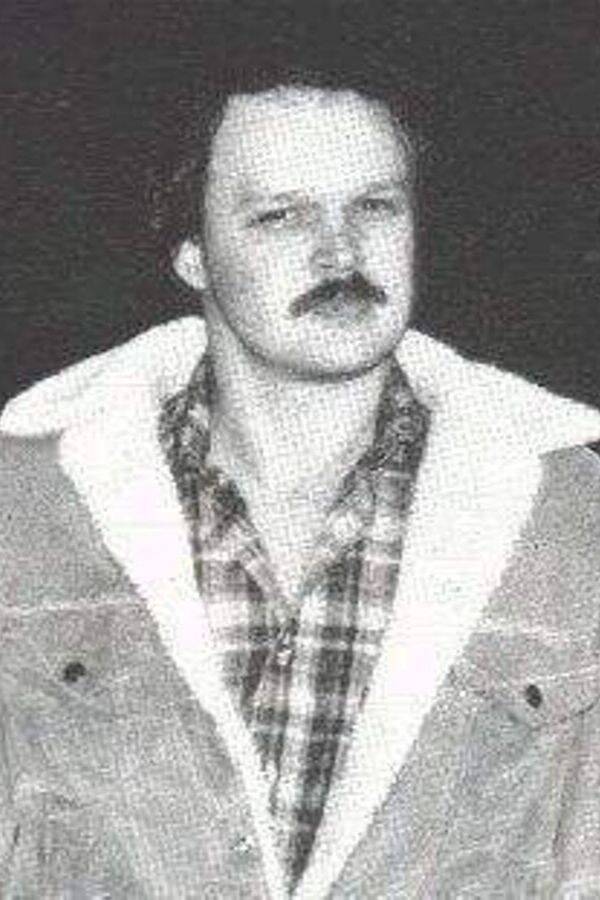
MurderpediaLarry Eyler as a young adult.
Though he was, arguably, one of the worst serial killers of the late ’70s and early ’80s, Larry Eyler was generally well-liked among his peers. In fact, following the Craig Long incident, his friends raised money and posted his $10,000 bond to get him released from prison.
Following his completion of high school via a GED, Eyler took a job at the Marion County General Hospital. He later moved careers and took a job at a shoe store and a liquor store.
When he wasn’t working, he frequented Indianapolis’s selection of gay bars, building a community and, for the first time in his life, making friends. In his early school days, he had discovered he was gay, and despite his reservations about it, he embraced it later in life.
While working at the shoe store, he became well known in the gay community, later falling in with a crowd of men with leather fetishes. Most friends and acquaintances described him as a “laid-back guy” who was known for bodybuilding as well as his close relationship with his mother and sister.
However, those who had sexual encounters with Larry Eyler described another layer to the man. He started off as the cool, laid-back guy everyone else described, but often turned violent in the bedroom.
Many of his conquests described Larry Eyler choking or bludgeoning them, or even inflicting light knife wounds on their torsos, often while shouting profanities.
Despite Eyler’s sadistic sexual streak, there were people who were rather fond of him. One friend, in particular, had nothing but good memories of him, and indeed helped get him out of trouble when Craig Long was threatening to testify against him.
Following his stint at the shoe store, Larry Eyler moved in with 38-year-old Indiana University professor Robert David Little. Their relationship, though close, was platonic. Little was also gay, though Eyler saw him more as a father figure. Indeed, Little played the part of one, offering Craig Long $2,500 not to press charges against Eyler following the stabbing.
Furthermore, Little often expressed his dislike of Eyler’s long-term romantic partner John Dobrovolskis. Dobrovolskis and Eyler met in 1981 and – despite Dobrovolskis’ wife and children – entered into a co-habitational, romantic relationship. Dobrovolskis’ wife Sally understood her husband’s homosexual preferences, and even let Eyler live with the family during the weekdays while he worked as a house painter in their town.

MurderpediaJohn Dobrovolskis and his family.
While Larry Eyler was living in a stable home, working a regular, well-paying job, had real friends and a real community, and was in the closest thing to a committed relationship he’d ever been in, and indeed, ever would be, it seemed that all of that wasn’t enough.
Whether his sadistic needs had surpassed consensual encounters, or whether he simply developed even more twisted ones, Larry Eyler began to look for new partners to test his sexual proclivities on – willing or not.
Becoming The Highway Killer
It is believed that between 1982 and 1984 Larry Eyler picked up and murdered, at minimum, 21 young men. Their bodies were found strewn about the sides of highways or dropped unceremoniously in cornfields near major bypasses, earning Eyler his nickname of the “Highway Killer” or “Interstate Killer.”
All of the men had been found with their pants and underwear around their ankles, subjected to various forms of sadomasochism and sexual assault. They all displayed signs of bludgeoning as well, including bruising and contusions, and knife marks to their torsos.
The victims were usually missing their shirts and wallets as well.
By January of 1983, a coordinated task force had been assembled to put an end to these gruesome murders. The task force first noticed that each of the crimes had likely been committed by the same perpetrator. The second was that the perpetrator had displayed such a level of rage that even the task force was surprised.
Many of the victims had excessive head wounds, suggesting that the perpetrator had continued stabbing them long past the fatal blow. They also displayed signs of aggravated assault, again continuing long past their deaths.
One victim, 19-year-old Steven Crockett, had been stabbed a sickening 32 times — and four of those blows had been to the head. Some of the victims were as young as 14.
The force determined that the perpetrator was likely a disturbed individual who was at war with his sexuality – that he had been guilty about his homosexual encounters and had killed the victim in an attempt to cover up his crimes and his indiscretions. The dismemberment of his victims followed this thinking. Some of the victims had even been disemboweled.
Despite their profile of the killer, however, the task force seemed to be at a dead end. They had discovered who the killer ought to be, but they were having a difficult time finding out exactly who he was – and the bodies were still being found.
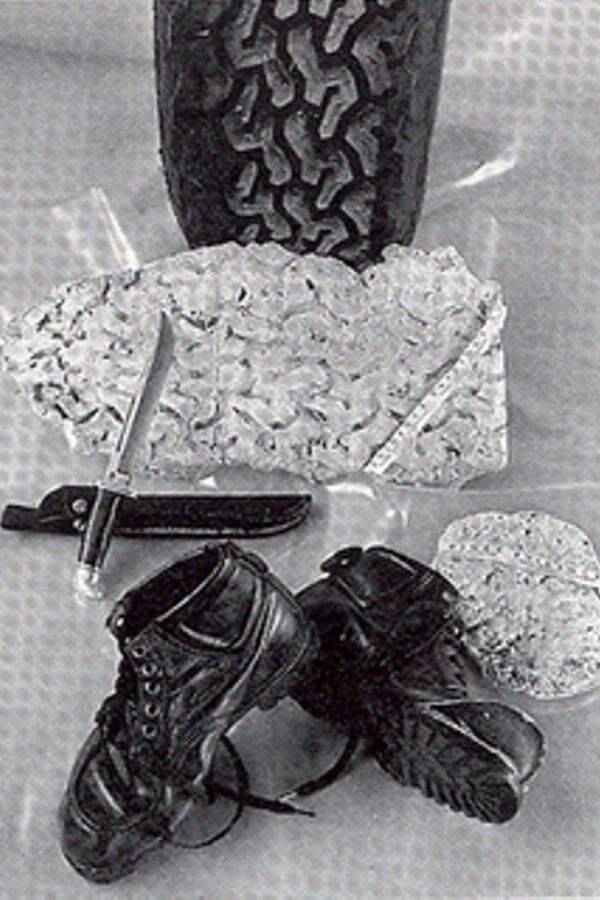
MurderpediaEvidence collected in John Eyler’s truck.
An Arrest, A Release, And Another Attack
On September 30, 1983, Larry Eyler was arrested on a traffic violation. When he was pulled over there was a young hitchhiker in the car with him and based on the sketchy interactions between the two the officer arrested both men for solicitation.
Following the arrest, Eyler’s truck was searched, revealing rope in the trunk, along with handcuffs, a hammer, two baseball bats, a mallet, and surgical tape. The police began questioning him, and subsequently alerted the special task force that had been assembled to investigate the Highway Killer.
Immediately the task force’s interest was piqued – Larry Eyler fit the profile of their killer almost perfectly. His lifestyle was a match for the man they were looking for, and he had admitted to commuting back and forth during the week from the two areas where most of the bodies had been found.
The task force eventually questioned Eyler about two murders, a pair of the most recent ones, but he refused to cooperate. Following a forensic examination of his truck, investigators were ultimately forced to let him go. Worried that he now knew he was a murder suspect would lead him to dispose of crucial evidence, the police managed to obtain a search warrant for the home Eyler shared with Robert Little.
There, they discovered mounds of circumstantial evidence that linked him to multiple murders. Receipts for handcuffs, credit card statements that put him in the suspected murder locations, knives, and a hospital bill revealing he’d been treated for a deep knife cut to the hand. Investigators thus came to believe that Larry Eyler was their Highway Killer.
“If Eyler were not the murderer [we] were seeking,” task force investigator Cathy Berner recalled later, “he was following the actual killer on a daily basis.”
On October 29, just a month after his first arrest, Larry Eyler was formally arrested and charged with murder. Based on the various searches of his car, the home he shared with Little, and another search of the home he shared with the Dobrovolskis family, the task force felt they had more than enough evidence.
By this time, Eyler had been feeling the heat and had compiled a legal defense team.
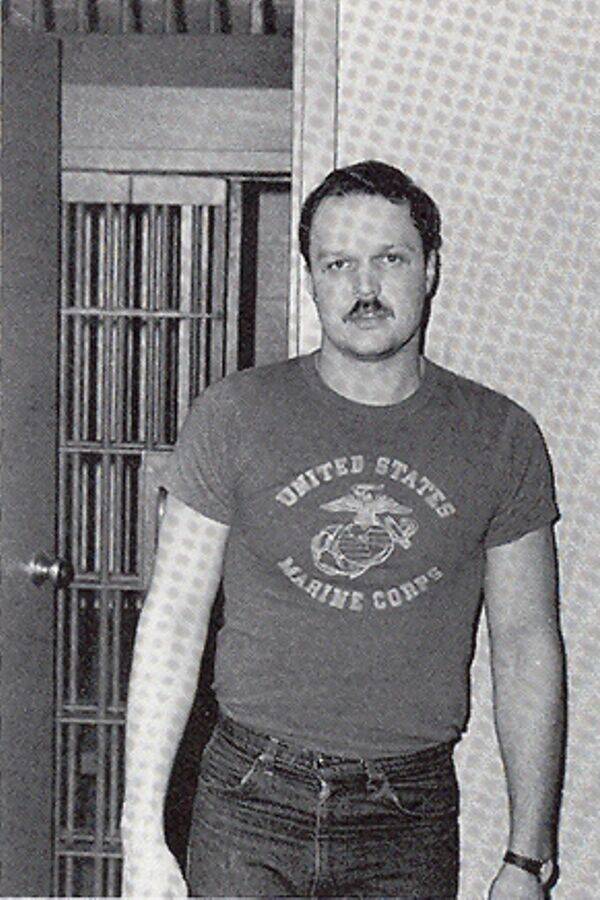
Murderpedia. Larry Eyler’s mugshot.
The team argued that though the arrest for the traffic violation was legitimate, everything that happened after was not – including all of the searches of Eyler’s property. They claimed that he hadn’t been properly Mirandized before the searches and that despite the fact that he signed a Miranda waiver, the timing was suspicious.
It then came out that the search of the Dobrovolskis’ home had been technically illegal, as the search warrant hadn’t been obtained before the search. After several legal proceedings which simply debated the legality of various searches and lines of questioning, Larry Eyler’s bond was reduced from $1 million to just $10,000.
Robert Little and the Eyler family posted the bond, and in February of 1984, Larry Eyler, who had murdered dozens of young men, walked free.
The Final Murder
On August 21, 1984, a janitor discovered human remains in garbage bags in a Chicago apartment complex – the same complex to which Larry Eyler had relocated following his mess of a murder charge.
The remains belonged to 16-year-old runaway Daniel Bridges. The teenager had been operating as a prostitute since he was 12 when he secured his last job with Larry Eyler.
Eyler bound the boy in his apartment where he beat and tortured him before finally stabbing Bridges to death. Then Eyler drained Bridges’ blood and dismembered him into eight pieces from his bathroom. He placed the pieces of the boy in separate garbage bags.
After discovering that Eyler lived in the complex and that several janitors could place him at the dumpsters the night before the body was discovered, police immediately arrested him.
Having spent his money on his first defense team, Eyler was forced to use public defenders as his representation at this trial. Unfortunately for him, the hodgepodge team was no match for the prosecution; this time, the searches had been legal and the arrest was going to stick.
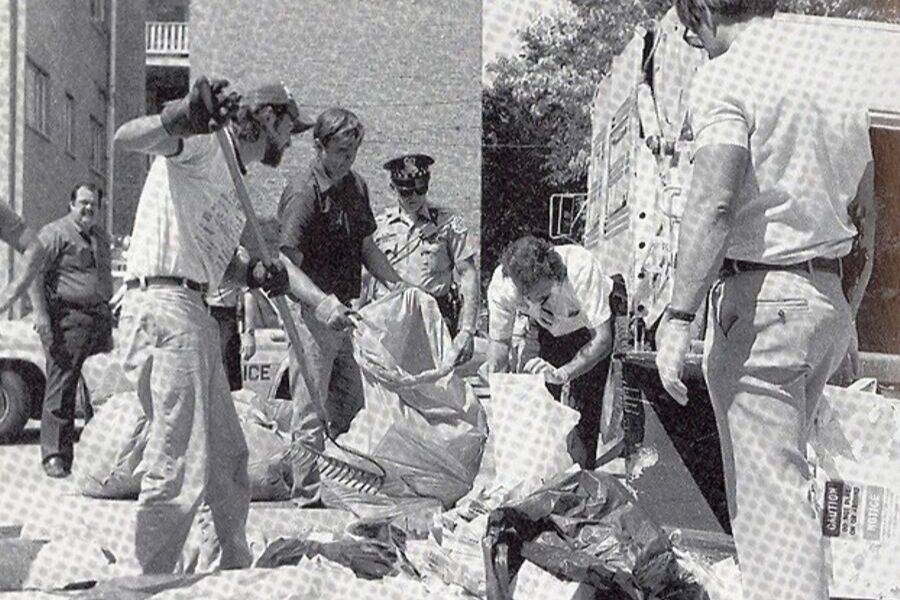
Murderpedia Police search the trash bags containing the body parts of Larry Eyler’s final victim.
At trial, the prosecution listed the mounting evidence against their client, including fingerprints found both on the interior and exterior of the trash bags in which the body had been found, bloodstains in the apartment that suggested a heavily bleeding body was dragged across the floor, and various forms of restraints.
The prosecution also had a few tricks up their sleeve to break Eyler down.
Not only did they call on Robert Little to testify against Eyler, but they also called on John Dobrovolskis. Both men admitted to being unable to reach Eyler by phone the night of the murder and Dobrovolskis admitted that once he was able to contact him, Eyler warned him against coming to his apartment.
Whether wittingly or not, the two men, once so at odds with each other over the man they both loved, corroborated each other’s stories and effectively sealed Eyler’s fate.
Larry Eyler was found guilty of the aggravated kidnapping, unlawful restraint, and the murder of Daniel Bridges, and subsequently sentenced to death. Over the next few months, more murder charges would follow as the task force linked more men to Eyler. In private conversations with attorney Kathleen Zellner, Eyler ultimately confessed to more than 21 murders, a fact which Zellner kept to herself until after Eyler’s death.
In March of 1994, following complications from AIDS which Eyler had been diagnosed with after his imprisonment, the killer died. Per his last requests, Zellner shared his confessions with the world and provided details of the individual cases that only the murderer would know. He also implicated Little who was ultimately acquitted.
Larry Elder admitted to kidnapping, raping, torturing, and murdering 21 young men and boys between the years of 1982 and 1984, and listed them by name in his confession, knowing that death was just around the corner and he would never face further justice.
After this look at Larry Eyler, the Highway Killer, read about Pedro Rodrigues Filho, the real life “Dexter,” as well as Jeffrey Dahmer. Then, check out these serial killer documentaries that will chill you to the bone.





